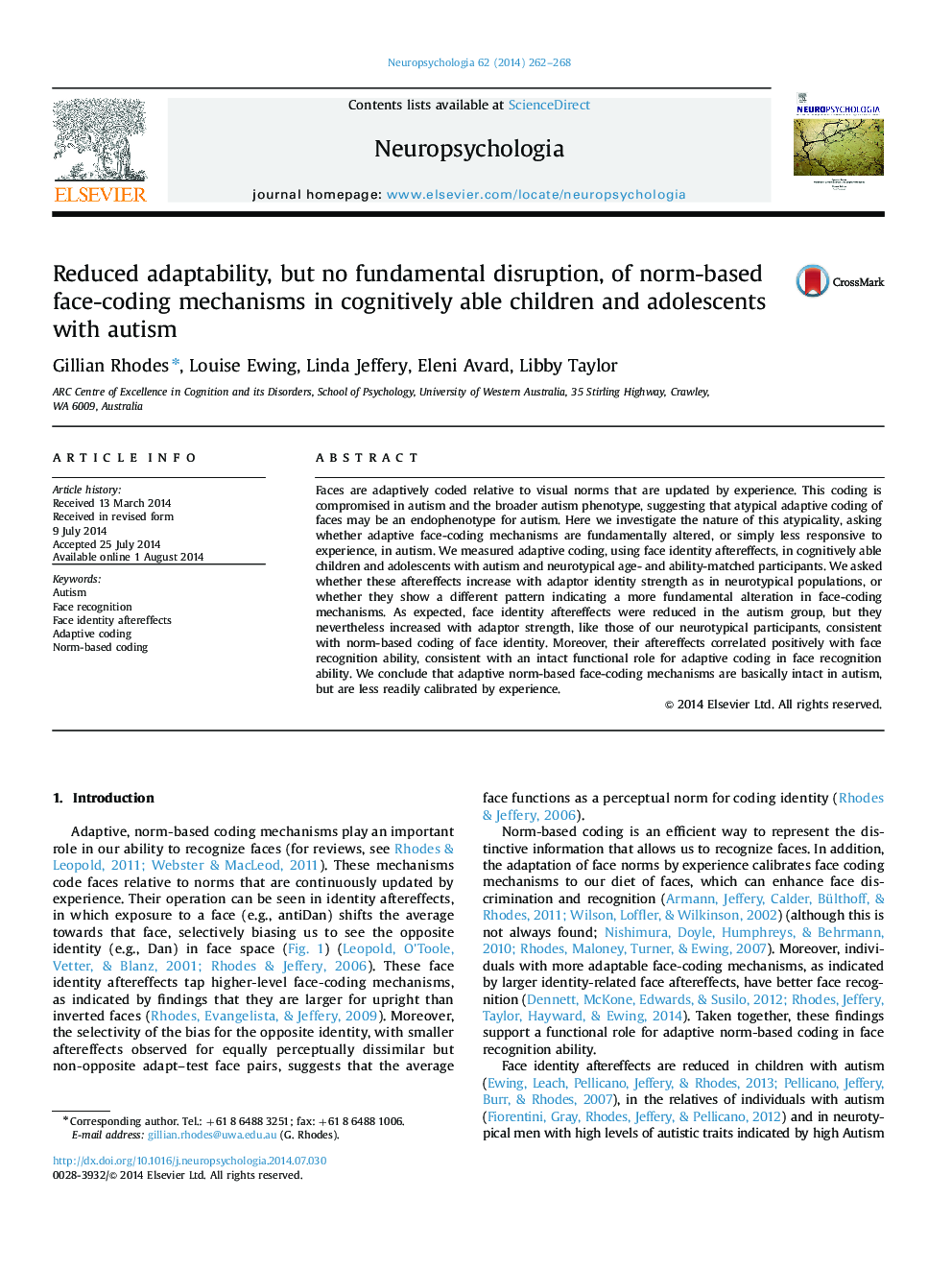| Article ID | Journal | Published Year | Pages | File Type |
|---|---|---|---|---|
| 7321149 | Neuropsychologia | 2014 | 7 Pages |
Abstract
Faces are adaptively coded relative to visual norms that are updated by experience. This coding is compromised in autism and the broader autism phenotype, suggesting that atypical adaptive coding of faces may be an endophenotype for autism. Here we investigate the nature of this atypicality, asking whether adaptive face-coding mechanisms are fundamentally altered, or simply less responsive to experience, in autism. We measured adaptive coding, using face identity aftereffects, in cognitively able children and adolescents with autism and neurotypical age- and ability-matched participants. We asked whether these aftereffects increase with adaptor identity strength as in neurotypical populations, or whether they show a different pattern indicating a more fundamental alteration in face-coding mechanisms. As expected, face identity aftereffects were reduced in the autism group, but they nevertheless increased with adaptor strength, like those of our neurotypical participants, consistent with norm-based coding of face identity. Moreover, their aftereffects correlated positively with face recognition ability, consistent with an intact functional role for adaptive coding in face recognition ability. We conclude that adaptive norm-based face-coding mechanisms are basically intact in autism, but are less readily calibrated by experience.
Related Topics
Life Sciences
Neuroscience
Behavioral Neuroscience
Authors
Gillian Rhodes, Louise Ewing, Linda Jeffery, Eleni Avard, Libby Taylor,
